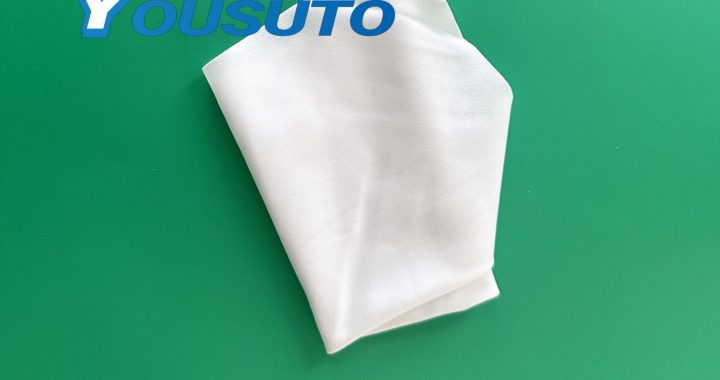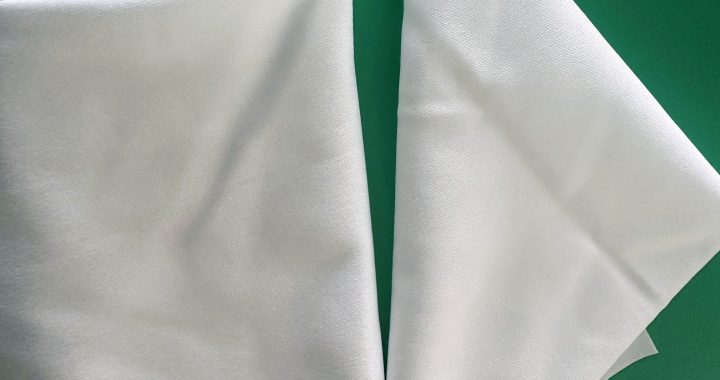Precision instruments—such as optical microscopes, semiconductor metrology tools, and lab spectrometers—require meticulous cleaning to maintain accuracy. Traditional low-density wipes often require multiple passes, shed fibers, or leave residues, slowing workflows and risking instrument damage. High-density designed cleanroom wipes, with their thick, tightly woven structures and optimized fiber compositions, address these pain points by streamlining cleaning processes and delivering superior results. Below is a detailed breakdown of how their design elevates cleaning efficiency for precision instruments.
1. Superior Particle and Residue Trapping: Fewer Passes, Better Results
Precision instruments attract sub-micron dust and oil residues (e.g., fingerprint oils on lens surfaces, flux on sensor components) that disrupt performance. High-density wipes reduce cleaning time by capturing contaminants in fewer strokes:
- Dense Capillary Networks: Their tight weave (250–400 gsm) creates millions of tiny channels that trap particles as small as 0.05μm—far smaller than the 0.5μm particles low-density wipes miss. For example, cleaning a spectrometer’s laser lens with a high-density wipe removes 99.5% of dust in 1–2 passes, vs. 4–5 passes with a standard wipe.
- Effective Residue Dissolution: When paired with precision-safe solvents (e.g., 70% IPA for optics, deionized water for electronics), the thick, absorbent fibers hold solvent longer. This allows the wipe to dissolve stubborn residues (e.g., dried calibration fluids on sensor arrays) in a single pass, eliminating the need for repeated wiping that can scratch delicate surfaces.
- Ultra-Low Linting: Made from continuous-filament polyester or microfiber, high-density wipes shed ≤1 fiber per use. This eliminates post-cleaning fiber removal (a time-consuming step with low-density wipes) and prevents fiber-induced instrument malfunctions (e.g., blocked sensor ports).
2. Durability for Extended Use: Reduced Wipe Changes
Frequent wipe changes (due to tearing or saturation) disrupt cleaning workflows and increase waste. High-density wipes’ robust design minimizes interruptions:
- Tear and Fray Resistance: Reinforced, heat-sealed edges prevent fraying even when wiping around sharp instrument components (e.g., microscope objective threads, sensor pins). A single high-density wipe can clean an entire optical bench without tearing, vs. 2–3 low-density wipes that degrade mid-task.
- High Liquid Retention: They absorb 10–15x their weight in solvent or liquid, avoiding premature saturation. Cleaning a PCB test fixture with a high-density wipe requires no mid-task wringing or replacement, cutting cleaning time by 30% compared to thin, fast-saturating wipes.
- Reusability (When Approved): For non-critical instrument surfaces (e.g., external housings), high-density wipes can be rinsed with solvent and reused 3–5 times. This reduces the time spent restocking wipes and minimizes waste disposal, further streamlining operations.
3. Precision Access: Targeted Cleaning Without Instrument Damage
Precision instruments have tight crevices (e.g., between lens elements, around connector pins) that are hard to reach without damaging sensitive parts. High-density wipes’ design enables targeted cleaning:
- Flexible, Moldable Structure: Their thin, pliable fibers can be folded into narrow strips or small pads to access tight spaces (e.g., the gap between a spectrometer’s sample holder and detector). This ensures no dust or residue is left in hard-to-reach areas that would require disassembly (a time-intensive process) with standard wipes.
- Controlled Pressure Distribution: The thick, uniform texture distributes pressure evenly across the wipe surface. This prevents localized pressure points that could scratch delicate coatings (e.g., anti-reflective layers on microscope lenses) or bend small components (e.g., MEMS sensor diaphragms)—common risks with thin, uneven low-density wipes.
4. Consistency for Reliable Instrument Performance
Precision instruments require consistent cleaning to maintain calibration and accuracy. High-density wipes deliver repeatable results that reduce rework:
- Uniform Performance: Each high-density wipe has the same thickness, fiber density, and absorption capacity, ensuring every instrument receives the same level of cleaning. This eliminates variability from low-density wipes (which can have inconsistent fiber distribution) that leads to uneven cleaning and frequent instrument recalibration.
- Compliance with Instrument Standards: Many high-density wipes meet ISO 14644-1 Class 5 standards and manufacturer-specific guidelines (e.g., Nikon’s optical cleaning specifications). This ensures cleaning practices align with instrument maintenance protocols, reducing the risk of voided warranties or performance issues.
For labs, manufacturing facilities, and research centers relying on precision instruments, high-density designed cleanroom wipes are a catalyst for efficiency—they cut cleaning time, reduce waste, and protect valuable equipment, ensuring instruments deliver accurate results with minimal downtime.




